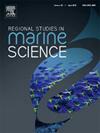Regional Disparities and Dynamic Evolution of Marine Science and Technology Innovation in China
IF 2.1
4区 环境科学与生态学
Q3 ECOLOGY
引用次数: 0
Abstract
The present study addresses two critical gaps in coastal innovation system research: (1) the absence of integrated frameworks for evaluating spatiotemporal efficiency and (2) the lack of empirical analyses on the factors contributing to interregional knowledge disparities in marine science and technology. While prior studies primarily focus on determinants of innovation efficiency, they often neglect regional heterogeneity and the evolutionary dynamics of technological advancement. Additionally, the commonly used two-stage DEA method fails to account for environmental influences and statistical noise, introducing potential biases. To enhance analytical accuracy, a three-stage bootstrap-corrected DEA model incorporating environmental controls was employed. Using panel data from 11 Chinese coastal provinces and municipalities spanning 2009–2020, spatial stratification patterns were quantified through Dagum Gini decomposition and innovation clustering dynamics were examined via geospatial autoregressive models (ArcGIS 10.8.1). The present research represents the first integration of spatial econometrics with efficiency decomposition in the domain of marine technology. The findings indicate that while marine innovation efficiency in China remains suboptimal, it exhibits a trajectory of progressive improvement, with eastern coastal regions demonstrating superior performance. The observed spatial disparities follow an “east-strong, south-weak” distribution, highlighting the necessity for region-specific policy interventions. Further, standard deviation ellipse analysis corroborates a persistent south-north distribution of innovation productivity, with Jiangsu Province serving as the gravitational center. The present study provides a replicable framework for monitoring and optimizing maritime innovation ecosystems in developing economies, offering valuable insights for policymakers to mitigate spatial stratification and improve knowledge spillovers.
中国海洋科技创新的区域差异与动态演变
本研究解决了沿海创新系统研究的两个关键问题:(1)缺乏综合的时空效率评估框架;(2)缺乏对区域间海洋科技知识差异影响因素的实证分析。以往的研究主要关注创新效率的决定因素,而忽视了区域异质性和技术进步的演化动态。此外,常用的两阶段DEA方法未能考虑到环境影响和统计噪声,从而引入了潜在的偏差。为了提高分析的准确性,采用了包含环境控制的三阶段自举校正DEA模型。利用2009-2020年中国11个沿海省市的面板数据,通过Dagum Gini分解量化空间分层格局,并利用地理空间自回归模型(ArcGIS 10.8.1)检验创新聚类动态。本研究首次将空间计量经济学与效率分解相结合,应用于海洋技术领域。研究结果表明,尽管中国海洋创新效率仍处于次优状态,但其总体上呈现出逐步提升的趋势,其中东部沿海地区的海洋创新效率表现较好。观察到的空间差异遵循“东强南弱”的分布,突出了区域特定政策干预的必要性。此外,标准差椭圆分析证实了创新生产力的持续南北向分布,并以江苏省为重心。本研究为监测和优化发展中经济体的海事创新生态系统提供了一个可复制的框架,为政策制定者缓解空间分层和改善知识溢出提供了有价值的见解。
本文章由计算机程序翻译,如有差异,请以英文原文为准。
求助全文
约1分钟内获得全文
求助全文
来源期刊

Regional Studies in Marine Science
Agricultural and Biological Sciences-Ecology, Evolution, Behavior and Systematics
CiteScore
3.90
自引率
4.80%
发文量
336
审稿时长
69 days
期刊介绍:
REGIONAL STUDIES IN MARINE SCIENCE will publish scientifically sound papers on regional aspects of maritime and marine resources in estuaries, coastal zones, continental shelf, the seas and oceans.
 求助内容:
求助内容: 应助结果提醒方式:
应助结果提醒方式:


